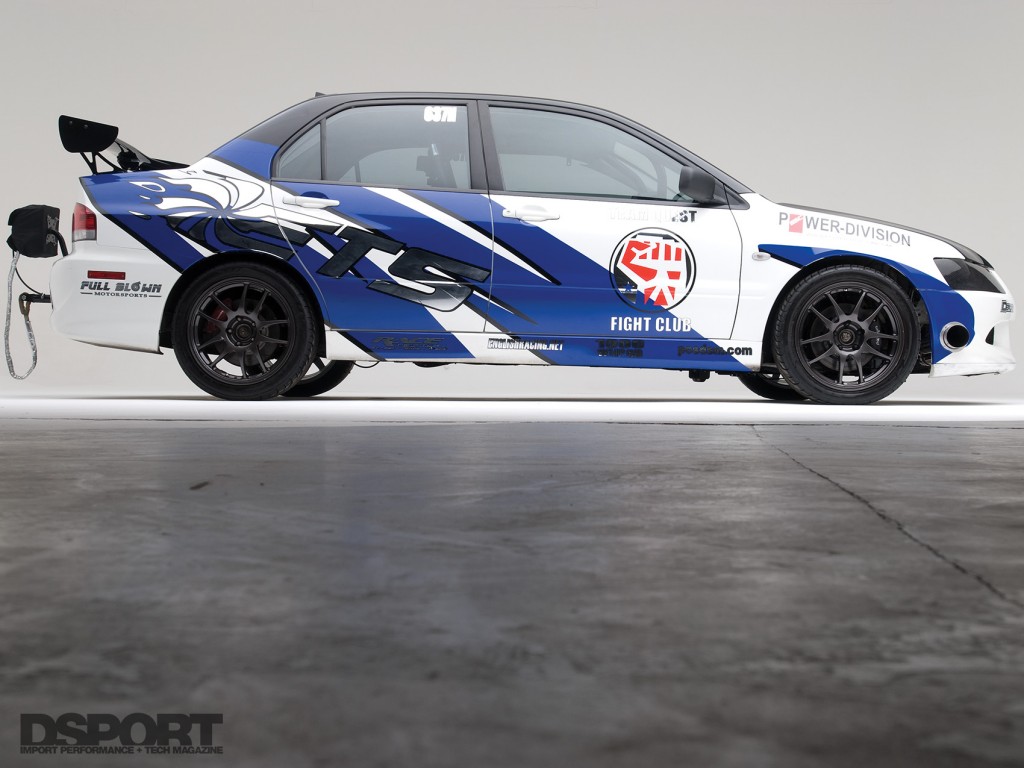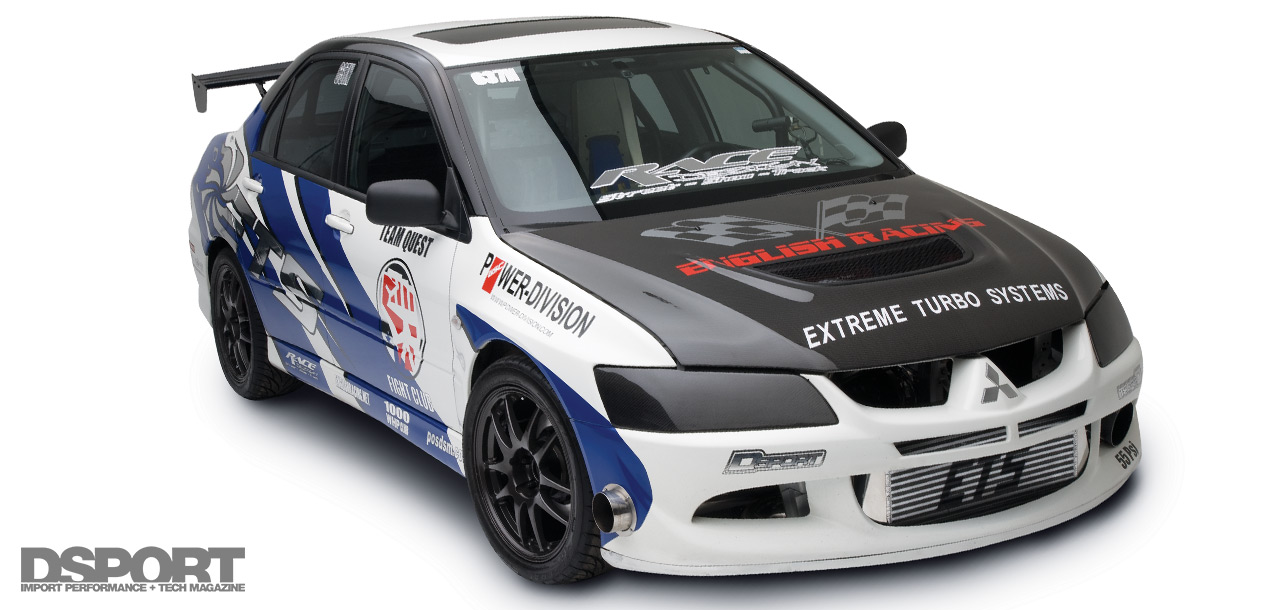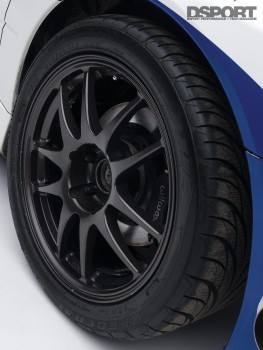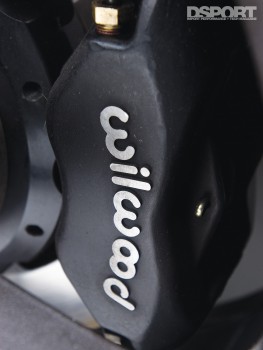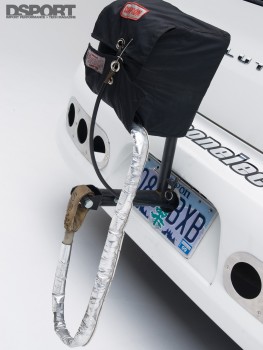Getting a Handle on It
When the power output of a vehicle is quadrupled from its factory state, you can be sure that anything attached to the engine’s flywheel is probably going to need to be upgraded. To control the massive power output of the engine, a Tilton carbon-carbon twin-disc clutch system was selected. The Tilton system allows for some serious power handling capabilities while the light weight of the carbon discs combined with the hydraulic release bearing (replaces the factory clutch fork and slave cylinder) provides for quick shifts. The clutch system regulates the power delivery to the English Racing modified transmission before sending power to the factory front axles and the Drive Shaft Shop Level-5 rear axle/hub system. To put the power from the wheels to the pavement, a set of 15×8-inch Motegi Track Lite wheels are fitted with four Mickey Thompson 15x8x26 drag slicks. To bolt the 15-inch wheels on the front of the EVO, the front brakes had to be changed to a lightweight Wilwood 4-piston setup to clear the smaller-diameter rims. On the street, 17×9 Rota Torque wheels carry 245/40R17 Federal 595 tires.
To control the weight transfer of the EVO on 9,000rpm launches, a set of Megan Racing coil-overs are fitted with custom-rate Eibach springs. To date, the best 60-foot times have checked in at 1.43- seconds. With further suspension tuning, the hope is to get these short times down to the high 1.3-second range. Since this EVO can blast into the 9s at will, the necessary safety equipment was required. An NHRA- approved 8-point roll cage was built into the interior to protect the driver from harm in the event of a rollover or impact with a wall. A parachute was also installed to the chassis to allow for chute-assisted stops at the end of the 1320.
Best of Times, Worst of Times
As anyone can imagine, the path to getting a 9-second timeslip and a 1000-horsepower dyno sheet is neither quick nor easy. Over the two- and-a-half year tuning experience, a number of parts failures occurred along the way including bent connecting rods, bent valves, blown up rear ends, and disintegrated compressor wheels. Solving one problem often led to the development of the next problem. However, owner Paul Nelson says if he had to do it all again, he would do it in an instant. “The process of learning and overcoming the adversities is one of the best parts of the tuning experience,” says Paul. He continues, “achieving a goal like this requires an immense amount of hard work, patience, perseverance and most of all, teamwork.” This is some great advice for any serious tuner.